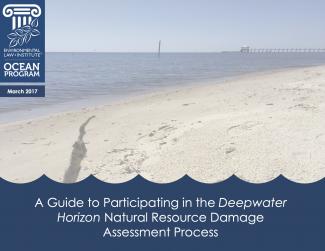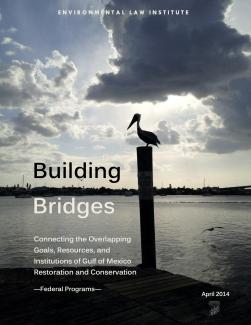Public Participation in Environmental Decision-Making: Step-by-Step Tips for Providing Effective Verbal Comments
This booklet provides an introduction to submitting verbal comments at public meetings. Providing verbal comments on proposed government actions (which include not just actions by the government, but also actions it permits or licenses) is a way to influence decisions on issues you care about. In this booklet, you will find an overview of the process for providing public verbal comments and suggested tips and techniques for delivering thorough and convincing comments.
Public Participation in Environmental Decision-Making: Step-by-Step Tips for Writing Effective Public Comments
This booklet, adapted from the leading text The Art of Commenting, provides an introduction to writing comments to government agencies. Submitting written comments on proposed environmental actions is a way to make your voice heard and to influence decisions on the issues you care about. In these pages, you will find an overview of the public written comment process and tips and techniques for creating thorough and convincing comments.
Public Participation in Environmental Decision-Making: Introduction to Public Participation
Public participation provides you with an opportunity to influence environmental decision-making. There are many different ways for people to participate in local, regional, and national-level decisions. This document provides an overview of public comment and is meant to help communities decipher the public participation process.
A Guide to Participating in the Deepwater Horizon Natural Resource Damage Assessment Process

When an oil spill occurs, natural resources like fish, birds, and marshes may be injured. A natural resource damage assessment (NRDA) is a process focused on figuring out what those injuries are, coming up with a plan to fix those injuries, and then fixing them.
FAQs on the NEPA Scoping Process
The National Environmental Policy Act (NEPA) is a law that requires federal agencies to examine the environmental impacts of their proposed activities. Under NEPA, if a federal action is likely to “significantly affect” the environment, the agency must prepare a detailed Environmental Impact Statement (EIS) before taking any action. This document addresses frequently asked questions about the NEPA scoping process.
Navigating the EIS Process
The National Environmental Policy Act (NEPA) is a law that requires federal agencies to examine the environmental impacts of their proposed activities. Under NEPA, if a federal action is likely to “significantly affect” the environment, the agency must prepare a detailed Environmental Impact Statement (EIS) before taking any action.
This fact sheet provides information about the EIS process in general; it also includes some specific information about the ongoing EIS process for the proposed Mid-Barataria Sediment Diversion (MBSD),
Public Participation in the Mid-Barataria Sediment Diversion: NEPA and NRDA
The U.S. Army Corps of Engineers, New Orleans District, is seeking comment on the draft environmental impact statement (EIS) for the Mid-Barataria Sediment Diversion (MBSD) restoration project. If approved, the MBSD would reconnect the Mississippi River to Louisiana’s Barataria Basin and, through the controlled release of sediment-laden freshwater from the river, allow sediment and nutrients to flow into the basin with the goal of restoring wetlands and slowing the rate of coastal land loss.
Executive Summary of Building Bridges: Connecting the Overlapping Goals, Resources, and Institutions for Gulf of Mexico Restoration and Conservation (Federal Programs)
Through the NRDA early restoration process, NFWF settlement funds, and the RESTORE Act, the five Gulf States are already slated to receive billions of dollars for restoration and recovery. Additional funds will become available as the processes continue. Altogether, the restoration funding presents a significant opportunity to achieve meaningful, sustainable ecological restoration in the region.
Building Bridges: Connecting the Overlapping Goals, Resources, and Institutions of Gulf of Mexico Restoration and Conservation (Federal Programs)

On April 20, 2010, an explosion rocked the Deepwater Horizon mobile offshore drilling unit. Eleven crewmen lost their lives in the blast, and the rig burned for the next thirty-six hours. Then, forty-one miles off the southeast coast of Louisiana, the Deepwater Horizon sank. Back at the wellhead, a quarter-mile away and 5,000 feet beneath the surface of the Gulf of Mexico, the environmental disaster was just beginning.